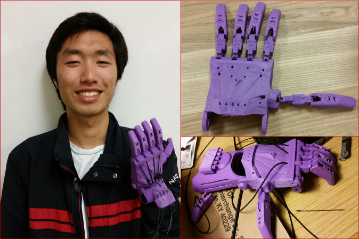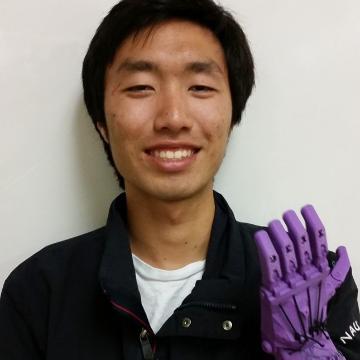After designing, building, and installing an off-grid solar tracking system to power equipment for a local science program, mechanical engineering junior David Lyons headed to Ghana, where he raised funds to install a similar system to charge lights and cell phones in a rural community with no electricity.
Read MoreIs there an engineer in the House? Yes; actually, a corps of Fellows from various engineering professional societies regularly lend their expertise to our nation's elected representatives. Last year, Mahantesh Hiremath, deployment subsystems manager for Space Systems Loral and lecturer in SCU's Department of Mechanical Engineering, spent a year on the Hill as ASME Congressional Fellow and Technical Advisor to the U.S. House of Representatives' Committee on Science, Space, and Technology.
Read MoreCivil engineering alum, Michael Wehr '85, who has spent his career with the U.S. Army Corps of Engineers, came back to SCU for a ceremony marking his promotion to the rank of major general. The two-star general said, "It feels great to come back to the place and people who shaped me at an early age for the career that led to this day." Wehr is now in command of the $2 billion civil works program in the Mississippi Valley Division in Vicksburg, Mississippi.
Read More-
Senior Engineering Design Conference
This spring, hundreds of alumni, industry leaders, parents and friends of the School of Engineering will converge on campus to watch our seniors present their capstone projects at the Senior Design Conference.
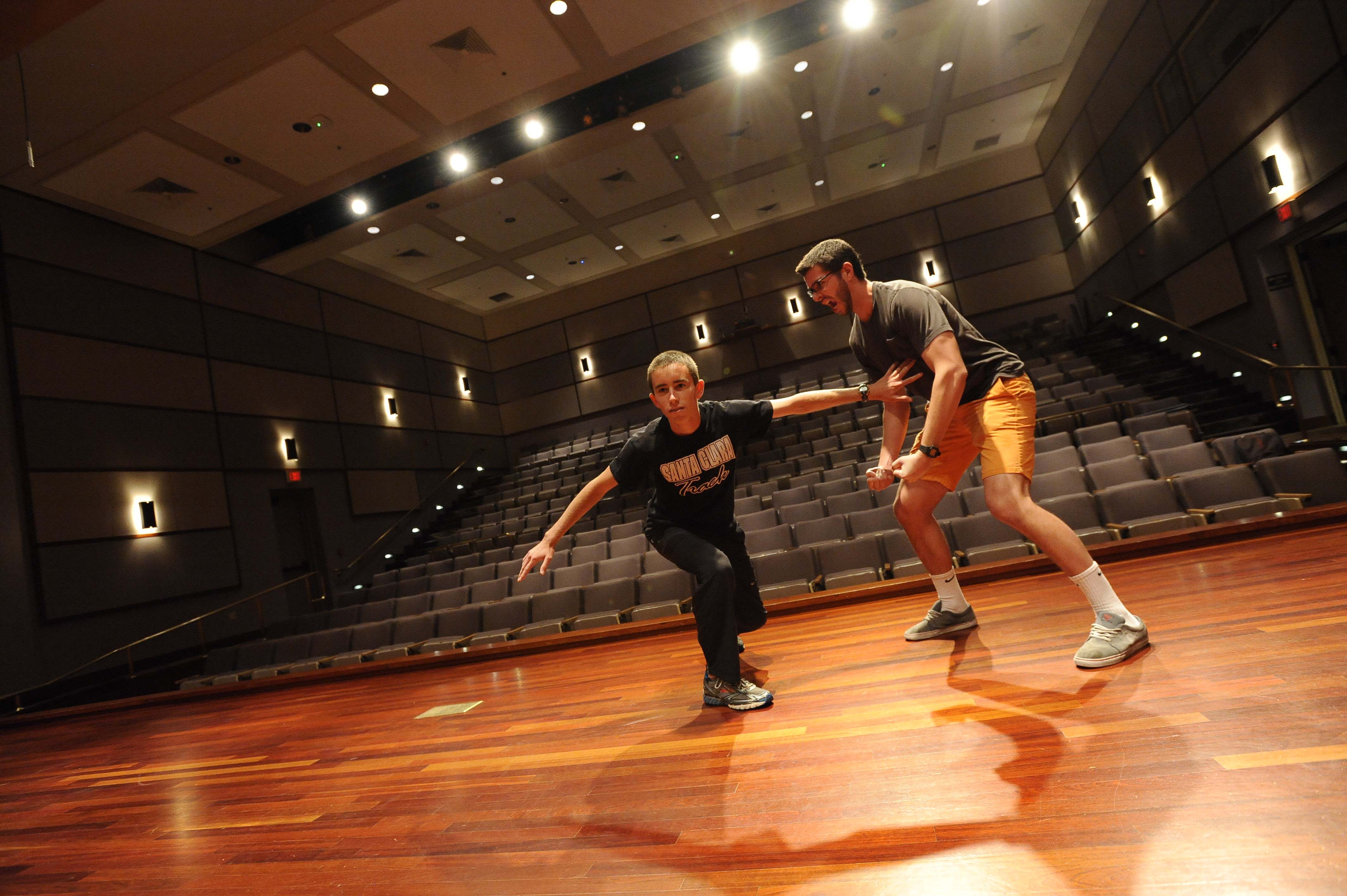
Improv for Engineers, an elective class, helps undergrads prepare for Senior Design presentations, job interviews, and life in the real world, by giving them practice with verbal and non-verbal communication.

A student-designed solar tracking system created to power microscopes for an outdoor science program in California was later installed to power lights and cell phones for a remote village in Ghana.

Bringing renewable energy to rural communities also brings improved standard of living, health, safety, and business opportunities.
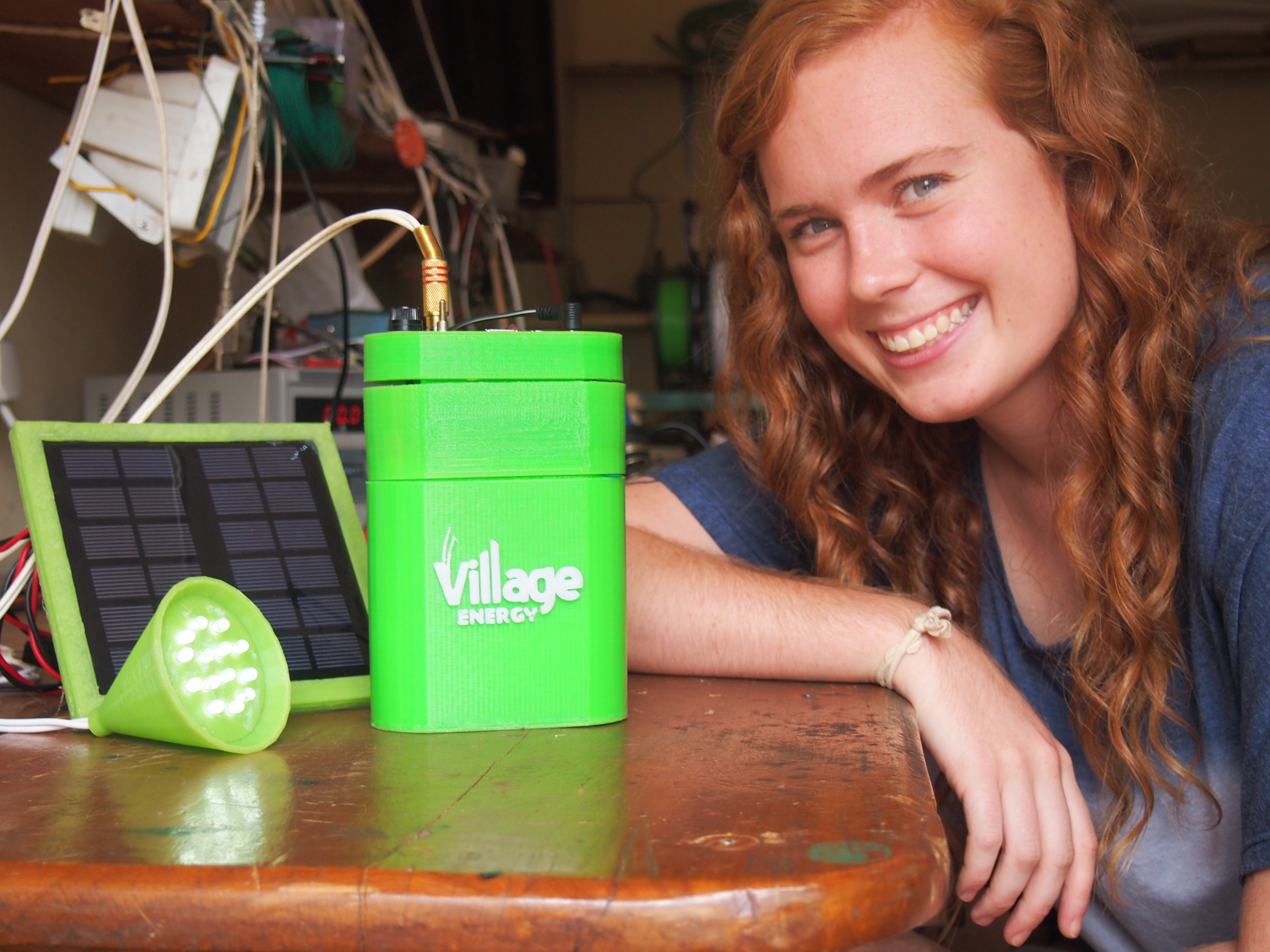
Engineering students tackle some of the world's biggest challenges through global internships, senior design research, Frugal Innovation projects, and more.
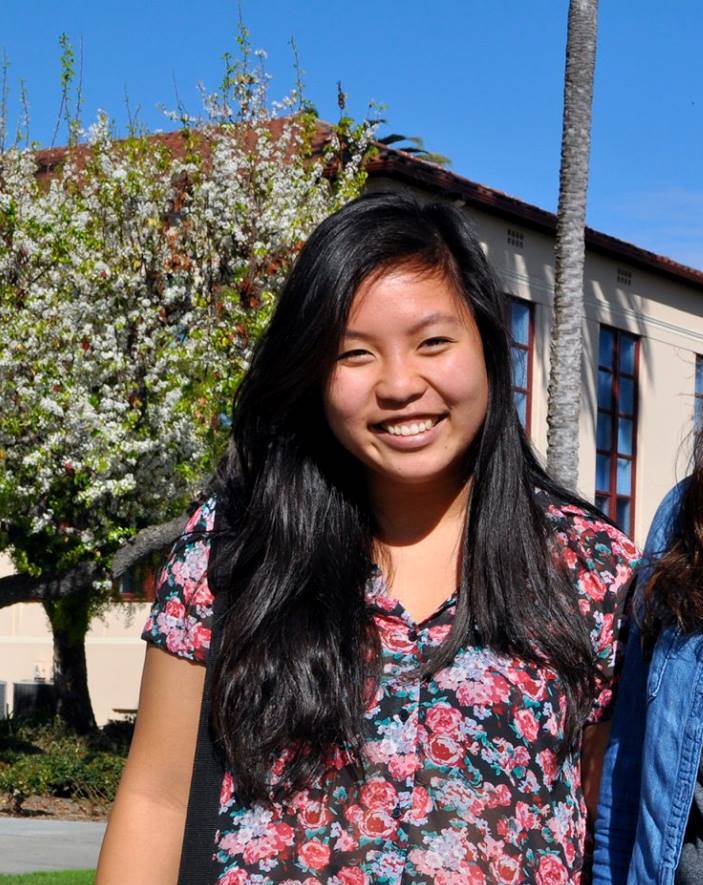
"...Santa Clara is not an end-all, but rather a beginning. It is the beginning of a career. It is a beginning of a lifetime of service. It is the beginning of our time to impact the world for the better in the best way we know how."
- Amanda Khoo '16, bioengineering

"...Sustainability has always been in my brain, but I never thought of it as a career until I started taking classes at Santa Clara... I want to specialize in environmental engineering. Having the technical knowledge and skills will open a lot of opportunities for me."
- Makena Wong '17, civil engineering
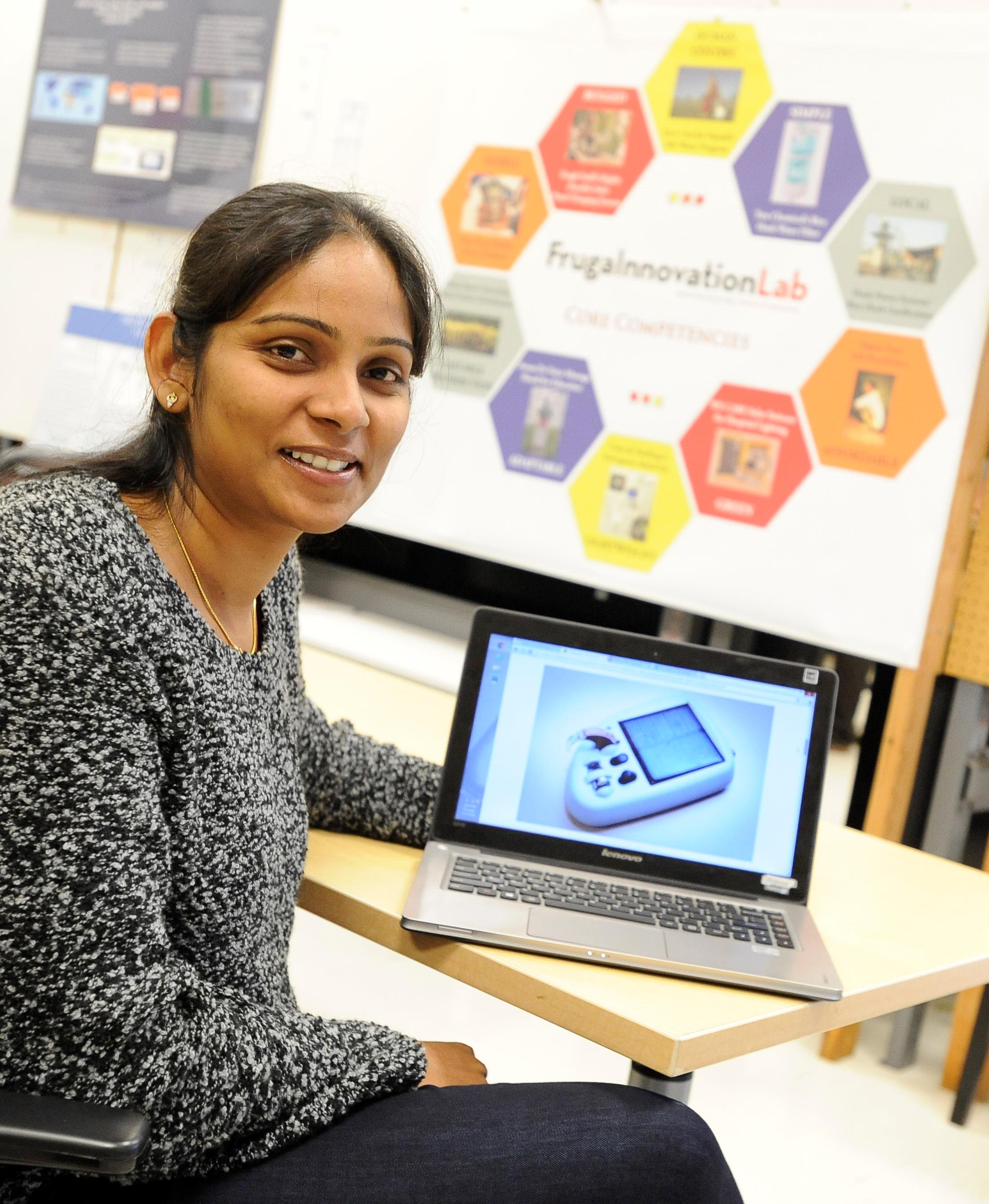
"SCU is on the cutting edge of developing mobile technologies for social benefit... We're just a piece of the puzzle for these organizations, but it feels so good to be part of helping them create the bigger picture."
- Sushma Devarapalli, software engineering grad student

"We are in the midst of a revolution that will affect our lives dramatically. Electric vehicles will dominate transportation, and energy storage will change everything. If our students have a leg up on these technologies, career opportunities will be wide open."
- Timothy Healy, professor of electrical engineering
-
Maker of the Month
Kyle Takeuchi/Maker Club Prosthetic Hand 3D Printer
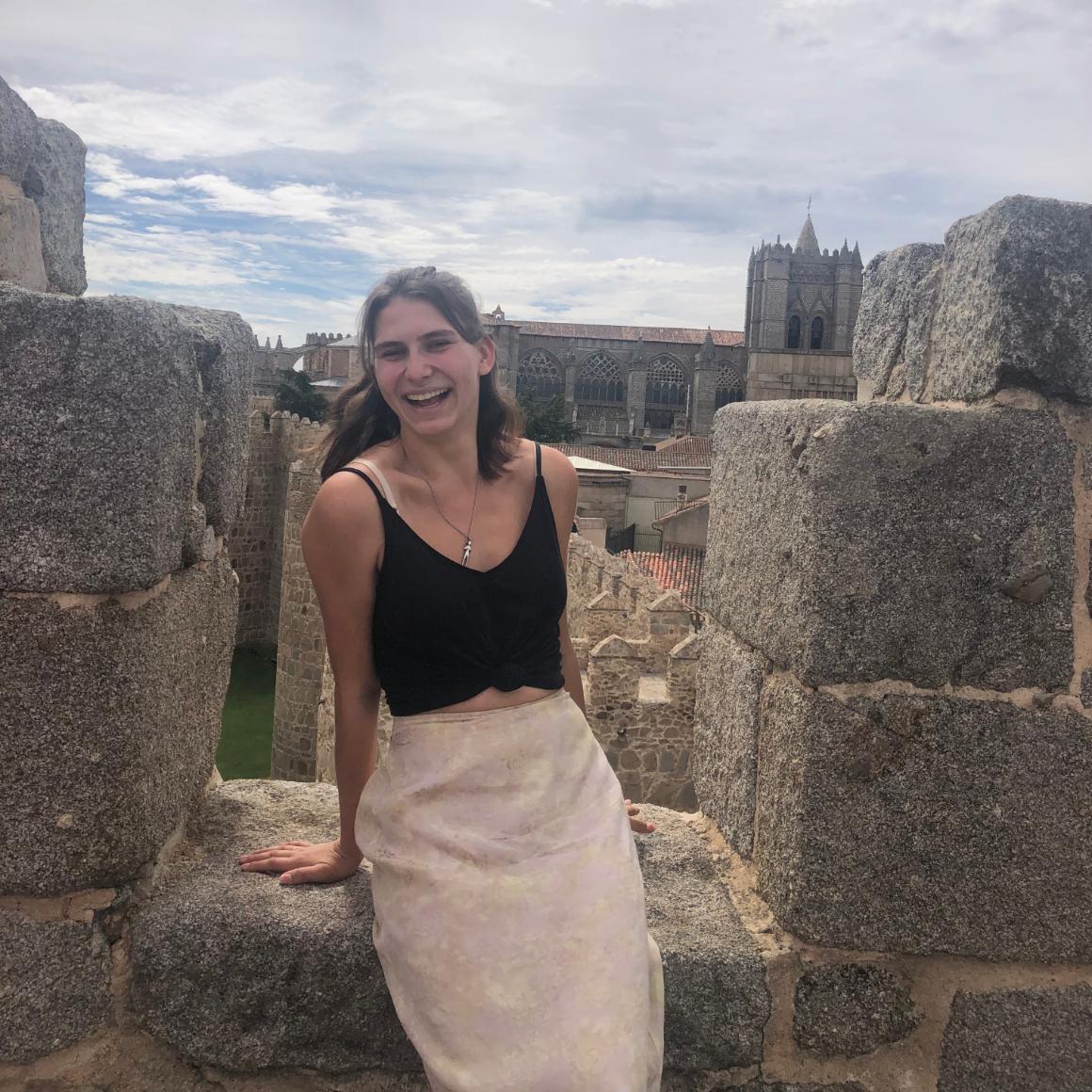
What brought you to Santa Clara University?
I participated in the Summer Engineering Seminar (SES) in Santa Clara the summer after my junior year of high school. So that got the idea of Santa Clara in my head. And then, when I was applying to schools, I knew I wanted to go into engineering, but I wanted to go to a smaller liberal arts school because I didn't want to lose that well-rounded education. Learning and being taught from every angle is important and necessary for engineers and anyone in general. Santa Clara's focus on sustainability and teaching the whole individual aligns with what I’ve been looking for.
How did you get into Electrical Engineering?
It's been a combination of things. I've always enjoyed and excelled at math in school. When I was younger, I attended a summer engineering camp for girls, which got me interested in the field. Then, in high school, I took various math and physics courses, and the support from teachers pushed the idea of going into STEM. What sealed the deal was the Summer Engineering Seminar at Santa Clara the summer after my junior year of high school. At SES, we were introduced to the different engineering fields and took many courses in each field. I took a mini-lecture with professor Bob Schaefer in electrical engineering and logic design, and that hit all the boxes for me.
How are you feeling after receiving the 2022 John W. Estey Outstanding PES Scholar Award?
It was quite shocking, to be honest. It was the second time I had applied, and it was a great feeling to see that all my hard work had finally paid off.
What is the John W. Estey Outstanding PES Scholar Award, and what are the requirements?
The PES is their power and energy society. The scholarship is given to students pursuing either an undergraduate or graduate degree in the power and energy industry within electrical engineering who show some dedication to that field and plan to pursue it in the future. It requires a few kinds of experiences, transcripts, and essays. But it's broken down into eight or nine regions in the US, so the west coast is one region, and the John W. Estey Outstanding PES Scholar Award goes to the top achieving applicant in the region.
Where do you see yourself after graduation?
I'm doing the four plus one program, so I will be here for one more year and graduate with a master's. I'm looking to stay in the Bay Area and get involved with sustainable energy to hopefully impact underserved populations and communities who don't necessarily have stable or consistent access to energy.
Can you discuss what you are doing for your Senior Design Project?
I am working on a microgrid control system, where I'll be simulating what a basic microgrid would look like and how it works. It's a control system that would ensure that the microgrid is stable. If there are any issues along the main grid, how can it separate itself from the grid, remain independent, and still maintain the power and energy needed by the loads?
What makes you excited about the future of electrical engineering?
Currently, in the power and energy industry, environmental justice and some social justice are at the forefront of people's minds, and how energy and creating a new design for the power grid can benefit both of those areas. Right now, there is a focus on the idea of microgrids and how they can impact the environment by integrating more renewable energy. In addition, work being done to improve reliable and sustainable energy will benefit underserved populations. These two ideas are prevalent in people's minds in the power and energy industry, and I'm excited to see where they go.
What advice would you give to someone who wants to get into electrical engineering?
Specifically for women trying to get into engineering, it's important to be completely honest with them that it will be hard and a fight. You will notice that you are one of few in most of your classes. The field of engineering, specifically electrical engineering, needs more women and their perspectives. There is so much room for improvement, and just pushing forward in a better direction. Yes, the field is challenging, but you will also be supported. People always want to help you, especially at Santa Clara University. The electrical engineering department does a great job of having super intelligent and powerful women role models who are always willing to help and offer support.
Anything else you would like to add?
I am part of the club women's ultimate frisbee team, which is a great group of women. We have a lot of women in STEM on the team who are nerdy thinkers. It's a great time and a fantastic way to balance how stressful academics can be. So it's an excellent opportunity for anyone who is very into academics and needs an outlet when feeling overwhelmed.

What brought you to Santa Clara University?
I was assigned to teach at Gonzaga University after my ordination in 2009. During that time, I stumbled upon an article describing a new age of artificial intelligence (AI). The article raised several critical questions: if an AI causes death, is it considered a crime committed by an AI or a faulty function of a machine? Given the advance in medical technology where artificial parts can replace human parts, at what point is a person still considered a person or a machine? I was intrigued by these questions because they brought forth the ethical issue of advanced technology and moral choices in applying human knowledge. That was why I asked the Provincial of US West Province for a doctoral study in Electrical and Computer Engineering so that I could have a chance to get into an ethical debate with other scientists in the field. I did my doctorate study in Electrical and Computer Engineering at Portland State University from 2013 to 2019. During my doctoral study, I read an article on new emergent devices written by a faculty at Santa Clara University and was fascinated with the potential applications of such nanodevices. My dissertation was about memcapacitive computing, a new emergent nanodevice in reservoir computing. Once I finished my doctoral study, I looked into Santa Clara University, Loyola Marymount University, and Gonzaga University. After a phone interview with Dr. Shoba Krishnan, the Electrical and Computer Engineering department chair, I was so excited to meet with all the faculty in the department for an interview. Santa Clara University is a home for me.
How did you get into electrical engineering?
All my brothers are electrical and computer engineers working in different industries. I am often curious about how things work around me. So pursuing an electrical and computer engineering degree as my career seems natural.
Your research is in neuromorphic computing architectures. Can you describe what this is?
In general, computers do a better job calculating the values than the human brain, such as calculating the value of the Pi square. However, there are specific tasks where we as human beings do better than computers, such as pattern recognition, prediction with incomplete information, or association. In addition, the human brain is very adaptive, flexible, tolerable, and highly energy efficient. Neuromorphic computing (or brain-inspired computing) is alternative computing that mimics the functionality of the human brain. My research focuses on whether we can create hardware with a similar function to the human brain.
What led you to research neuromorphic computing architectures using emergent nanodevices as computing platforms?
The human brain is a massive network of about 86 billion neurons and 1,000 trillion synapses. With the current technology of microchips, it is impossible to implement an artificial model, even a subset of the human brain. However, with the emergence of nanodevice (molecular scale), it is possible to derive a synthetic model of the human brain. The memcapacitor offers a better energy-efficient system and a memristor as a nanodevice. My research aims to answer the following questions: Can we connect memcapacitors to form a network that mimics the function of the human brain? If it is possible, how can we build such networks? How do such networks express the features of the human brain: adaptive, flexible, tolerable, and highly energy efficient?
What makes you excited about the future of electrical engineering?
My research area is just one grain of sand in the vast potential of neuromorphic computing and applications. It is impressive to see how machine learning and artificial intelligence have advanced so much in the past ten years in many applications, such as robotic applications, mobile devices, Internet-of-Things, intelligent appliances, smart sensors, and so on. On the molecular level, scientists explore various possibilities to program enzymes to deliver a drug to cancer cells. The opportunity for new technology is endless.
Another exciting thing about electrical engineering is the ability to work with students, challenge them to think outside the box, inspire them to solve practical and global issues and open new ideas beyond textbooks. It’s always a grace-filled experience for me to advise students on their senior projects. To see how they overcome technical problems with new ideas and, especially, to notice a sparking light in their eyes when they finally understand concepts in engineering courses.
What advice would you give to someone considering getting into electrical engineering?
We choose electrical engineering as our study major, not because it is easy. Indeed, it is more challenging and demanding compared to other majors. Electrical engineering makes sense to us. It kindles something in us. Of course, we must complete a lot of math and the required engineering courses. We may take a challenging course, encounter a problematic professor, or get lost in abstract theories. However, we should not give up the engineering fire in us because that is who we are. The more we learn and are open to questions, the better we understand how things work. I often encourage students in my class to ask many “why questions,” even if we already have an answer—the “why questions” force us to think differently and help us to understand deeply. In addition to technical development, I advise students to develop the other aspects of their human person, such as affection and relationships, by taking a course in music or poetry. Our lives are much more than numbers, theories, and concepts. We need those around us to make us whole and to make our life complete.
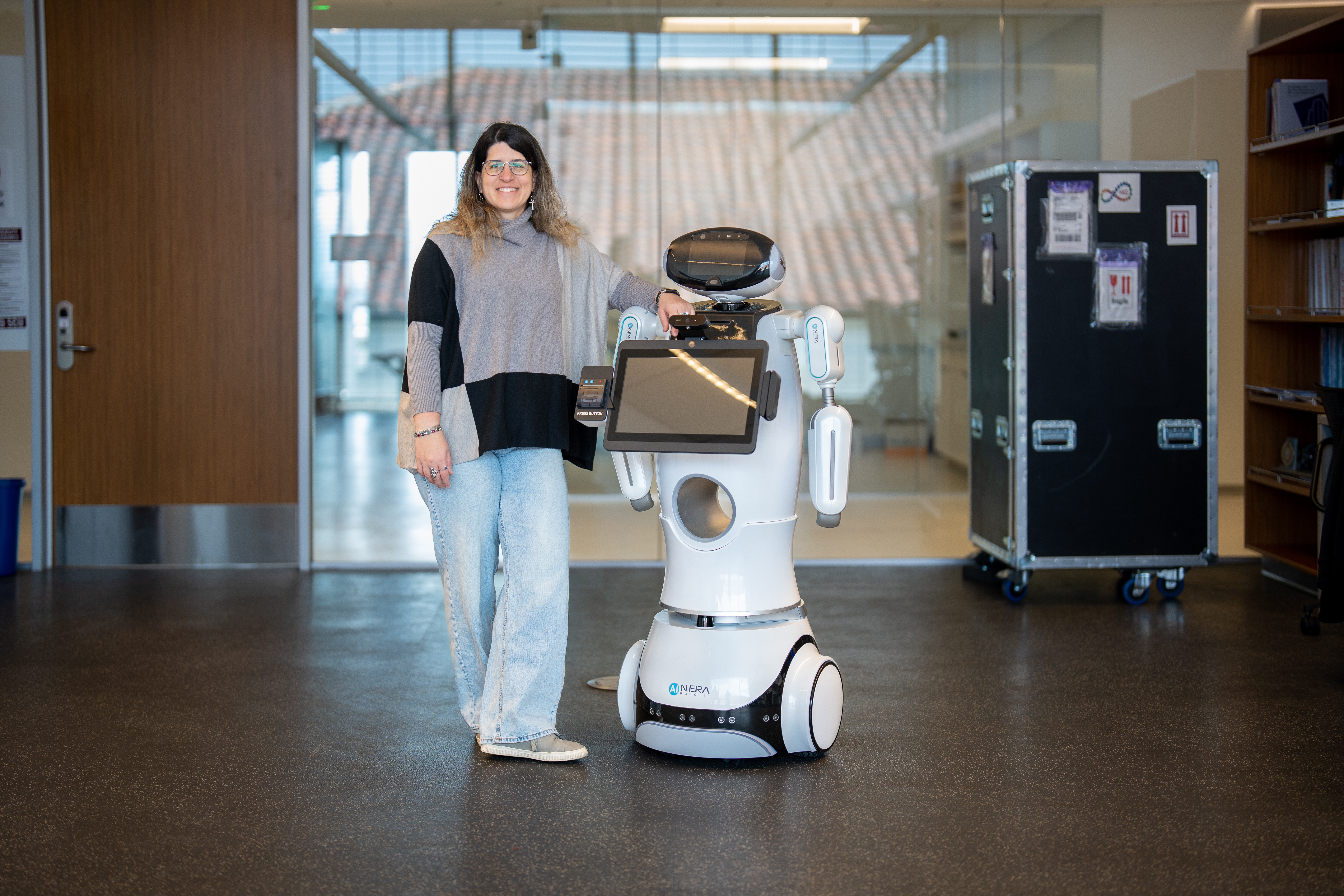
What brought you to Santa Clara University?
Before coming to SCU I was a postdoctoral researcher at the University of Texas at Darlington, and before that, I did my Ph.D. at the University of Bremen in Germany. I chose to come to Santa Clara because everywhere else I interviewed, I saw few females, but there was so much diversity at the School of Engineering and in the Department of Electrical and Computer Engineering.
What are you currently working on that excites you?
One of the projects we are working on is to make a personalized assistive robot that could help people with paralysis. Our goal is for the robot to recognize when a person is tired, and they could take over some of their tasks. For example, we are working on one scenario that involves collaborative cooking. In this scenario, the robot is responsible for fetching items while the person is cooking. So, for example, if the person gets tired and starts to forget what they need, the robot can give reminders. Or if you’re making pasta with sauce and start with cutting peppers, but you do need to start with garlic, the robot will remind you to use garlic first. We want the robot to learn the user's preference and not just take a random recipe from the internet. We received funding from the National Science Foundation and are very excited about it.
How did you get into robotics?
I wanted to get more into control and found an opportunity to get my master's in Automation and Systems in Greece. I then went to an exchange program in Germany. During my master's thesis, I worked in a massive EU plant where they built a new rehabilitation robot, and I was working in control, and that's where I realized this is what I want to do for the rest of my life. After that, I received an offer to do a Ph.D. in robotics. But if you were asking me probably ten years ago, what I would do, I would never have said robotics.
What are some exciting things happening in the field of robotics?
Because I'm focused more on assistive robots and how we can help people with disabilities, I feel that this is one of the areas where we'll need the most because of how the population is getting older. As we age, we need more help because, often, help is unavailable, so robots can at least help with some of the tasks. If you check statistics, for example, there is a nurse shortage in the US; that's where robots can come into play. Although robots can never replace nurses, they can be assistive. People will always need the help of other humans, but robots can do small things to make their lives easier. For example, a Rumba can only clean so much until the individual needs to step in and clean the rest.
Do you have any concerns for the future of robotics?
Everything I hear is about robots taking over jobs. They would take some of the low-income jobs but could bring more jobs because someone needs to maintain, control, and program the robots. This will ultimately bring in new job opportunities.
What does the future of robotics look like?
I built a collaboration with the Vista Center for the Blind and Visually Impaired here in San Jose. We are looking at ways in which technology could help, including robots. It is a preliminary idea at the moment, but we hope to get some preliminary results and the funding to work in that area. The collaboration is with John Giddings from the Engineering Management and Leadership department.
For those looking to get into robotics, where should they start?
Robotics is an interdisciplinary field, and I recommend exploring a bachelor's degree in electrical and computer engineering, computer science and engineering, or mechanical engineering. If you're building robots, you need to know the mechanical and electrical aspects, so it's a good idea to pick any of the three bachelor's degrees you like the most. But I would recommend a master's in robotics and automation, which Santa Clara University happens to offer!
